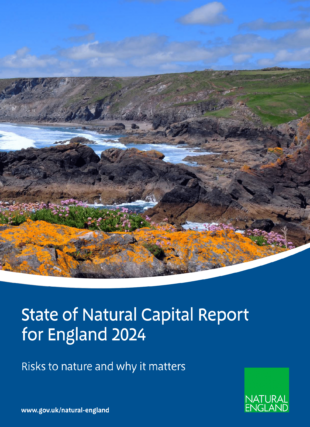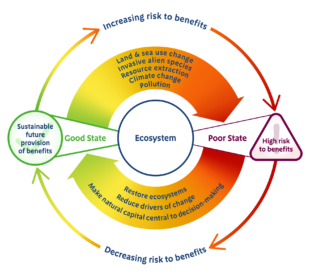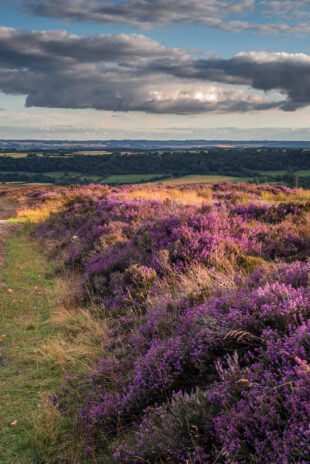The State of Natural Capital Report for England 2024 : Risks to nature and why it matters, a new report from Natural England, was published on 9 October 2024.

The economy and society are intimately dependent on the health of the natural environment. Indeed, the Dasgupta Review demonstrated how the economy is embedded in nature and how critical the links are with nature and our ongoing wealth and prosperity. This relies on nature being in good working order.
Healthy functioning ecosystems are more resilient and adaptive to change and are more productive, providing us with a wide range of benefits that we rely on. These benefits include clean air and water, health and wellbeing and helping us adapt to climate change amongst many others. These all in turn contribute to society and the economy.
Given the importance of nature, why is it still declining? One critical reason is that it is often missing in decision making even if its relevant. Nature is therefore invisible, unaccounted for and we all suffer the consequences.
For years now we have taken more from nature than it can supply sustainably. We are in effect running down our assets and we are beginning to see some serious consequences of that, through the impacts of climate change for example.

Making the invisible, visible
The State of Natural Capital Report for England seeks to provide the information on nature decision makers need so that they can include it. It describes why nature is relevant to broad policy areas – making the invisible visible and providing the missing evidence needed. The report assesses the state of our natural capital in relation to its ability to continue to provide us with the benefits we rely on, it describes the risks that we are carrying and points to what we can do about it.
The State of Natural Capital Report in a nutshell:
Assesses risk to England’s natural capital based on past and ongoing impacts on ecosystems and the benefits they provide.
Highlights the consequences of this risk on policy areas that are most dependent on the benefits from nature.
Identifies priority actions to mitigate the risks, through reducing pressures and large-scale ecosystem restoration.
Shows how the evidence and analysis can be used to bring the state of natural capital into decision making across government.
Action for nature is urgent
This report demonstrates how risk to our ecosystems, is a risk to society and the economy. But we need to work with ambitious urgency.

Tony Juniper says: “Tackling the Nature crisis will require action across all sectors to reduce risks to society. This report is your guide to action. I encourage you to read it, use it, and secure the benefits Nature provides into the future, not just for yourself but for society as a whole and the natural world which sustains us.”
What’s in the report?
- A comprehensive assessment of the state of ecosystem assets in England – why they are important and what is impacting on them.
- A risk register – why nature is at risk and what this means for the benefits from nature we rely on.
- An assessment of risk consequences for policy areas – how risks to the benefits from nature affect: economic resilience, Net Zero, climate adaptation, food security, health and wellbeing, water security.
- Indicators and data appendix – collating the best currently available indicators and data on the state of ecosystem assets.
Natural England’s Natural Capital team can be contacted by email to discuss what this report might mean for you.
The State of Natural Capital report and underpinning technical reports and data are out now on the Access to Evidence catalogue, A recording of the launch event will be available soon.
3 comments
Comment by Richard Watson posted on
Three things we can do to reduce flood risk, store carbon and increase biodiversity:
1. Dramatically reduce sheep numbers on the uplands and restore peat damaged by drainage and overgrazing.
2. Expand the creation of new woodland and species-rich grassland on poor-quality farmland.
3. Re-meander rivers and streams and re-establish wetlands. (NB. Beavers help.)
We've had many excellent reports from various bodies and organisations all more or less saying the same thing. Time to just get on with it!
Comment by John Trotter posted on
We all know from many previous and current studies that our environment is at serious risk. Various political parties promise action and funding but the input never seems to match the needs.
Why does any government allow massive construction programmes to provide sometimes less than satisfactory outcomes yet do not match this spending on environmental improvements.
We need levelling up more than ever.
Comment by Robert Stranger posted on
Much of British public sees farmland as nature. As long as the public wants a "manicured", "sanitised" landscape dominated by sheep and cows, there will never be changes.
Most British people do not want real wilderness.